Island Institute explores ways Maine's seafood industry could reduce carbon footprint
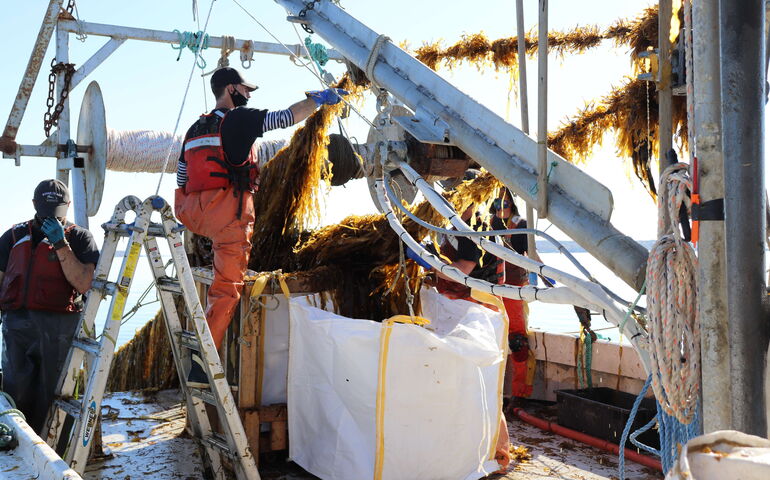 FILE PHOTO / COURTESY MAINE AQUACULTURE ASSOCIATION
In this photo from 2022, Bangs Island Mussels grows kelp near its mussel rafts, in a system called “integrated multi-trophic aquaculture” considered mutually beneficial for each species and the environment.
FILE PHOTO / COURTESY MAINE AQUACULTURE ASSOCIATION
In this photo from 2022, Bangs Island Mussels grows kelp near its mussel rafts, in a system called “integrated multi-trophic aquaculture” considered mutually beneficial for each species and the environment.
Seafood harvested and grown in Maine is already among the lowest-carbon protein sources available.
At the same time, meaningful opportunities exist to reduce greenhouse gas emissions in the industry.
That’s according to a study by the Rockland-based Island Institute, which partnered with seven seafood businesses — Luke’s Lobster, Bangs Island Mussels, Bombazine Oyster Co., Atlantic Sea Farms, Mook Sea Farm, Pemaquid Oyster Co. and Deer Isle Oyster Co. — to measure carbon footprint.
Investments to cut emissions and to stabilize or lower long-term operating costs could include the electrification of workboats and associated shoreside charging and clean energy infrastructure, the report says.
The study looks at the lobster, mussel, kelp and oyster supply chains. Goals include assessing options for seafood businesses to reduce emissions, lower operating cost and adapt to changing climate and market conditions; and identify state-level energy-efficient, climate-smart policies and programs.
“With deeper collaboration, targeted investment and shared innovation, we can turn these findings into real-world projects that secure Maine’s working waterfronts and shape a resilient, sustainable marine economy — one that can serve as a national model,” the report says.
Fossil fuel
An assessment of lobster and crab operations at Portland-based Luke’s Lobster showed total annual greenhouse gas emissions include the entire supply chain, from bait to restaurant. The primary driver of emissions is fuel consumption while fishing for bait and lobsters, accounting for almost 75% of the emissions.
Recommendations include transitioning fishing fleets to biodiesel or hybrid electric powered boats, increasing locally sourced bait and improving efficiency at processing facilities.
At Bangs Island Mussels, total emissions for mussel farming, processing and distribution were found to be lower per gram of protein than tofu. Primary drivers include product loss due to shell breakage, as well as boat fuel consumption. Recommendations include reducing broken mussels, transitioning workboats to electric or hybrid and adopting renewable energy for land-based processing.
At Atlantic Sea Farms, total emissions were driven by post-harvest processing, making it distinct from the other seafood businesses assessed. Primary drivers include energy use at dehydration facilities and transportation.
Recommendations include transitioning to renewable energy, improving farming yields and reducing storage times.
Four oyster-growing companies took part in the assessment, which showed that emissions vary depending on farm characteristics such as scale, husbandry techniques and farm layout. Primary drivers include fossil fuel use for boats and infrastructure, as well as electricity for heating and processing.
Recommendations include electrification of workboats, energy efficiency improvements, optimizing spat sourcing and exploring alternative packaging.
Shared findings
Across the seven seafood businesses, the highest emissions were found in the following areas:
- Fossil fuel use on fishing and aquaculture vessels.
- On-shore energy consumption for the built environment, including heating, drying, refrigeration, freezing and hatchery operations.
- Land-based transportation and distribution impacts emissions directly or indirectly for all aspects of business operations. Emissions from distribution activities are highly variable depending on distance covered and distribution method.
Recommendations include:
- Convert on-land vehicles and on-the-water vessels to non-fossil fuel-based energy sources.
- Increase charging infrastructure located at or near the water’s edge.
- Improve operational efficiency through process optimization and smart technologies to reduce run time in daily farming operations.
- Improve operational efficiencies on shoreside processing and handling facilities.
- Improve crop yields and minimize waste by upgrading farming gear and on-the-water processing equipment.
- Support and incentivize businesses to take advantage of behind-the-meter clean energy generation and storage such as on-site solar panels.
- Support research to better understand the use of kelp aquaculture might help capture and store carbon.
- Invest in island and coastal grid infrastructure.
Funding support came from the World Wildlife Fund, Jane’s Trust and donors.
To see the full report, click here.


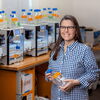



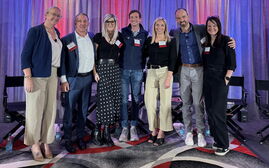
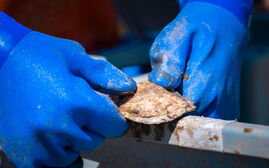


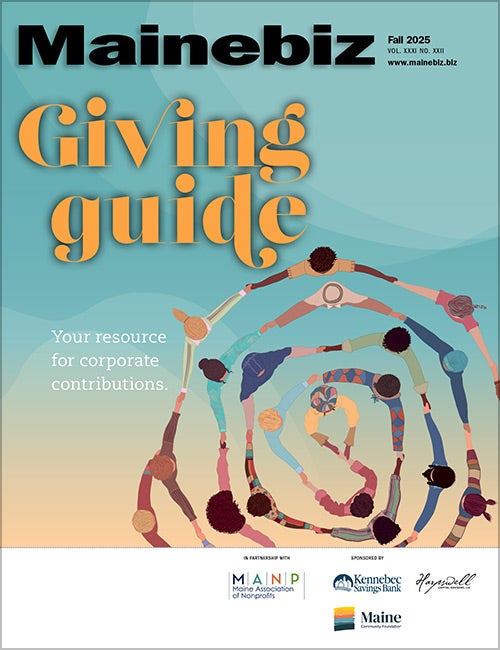



0 Comments